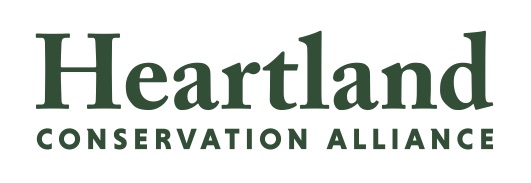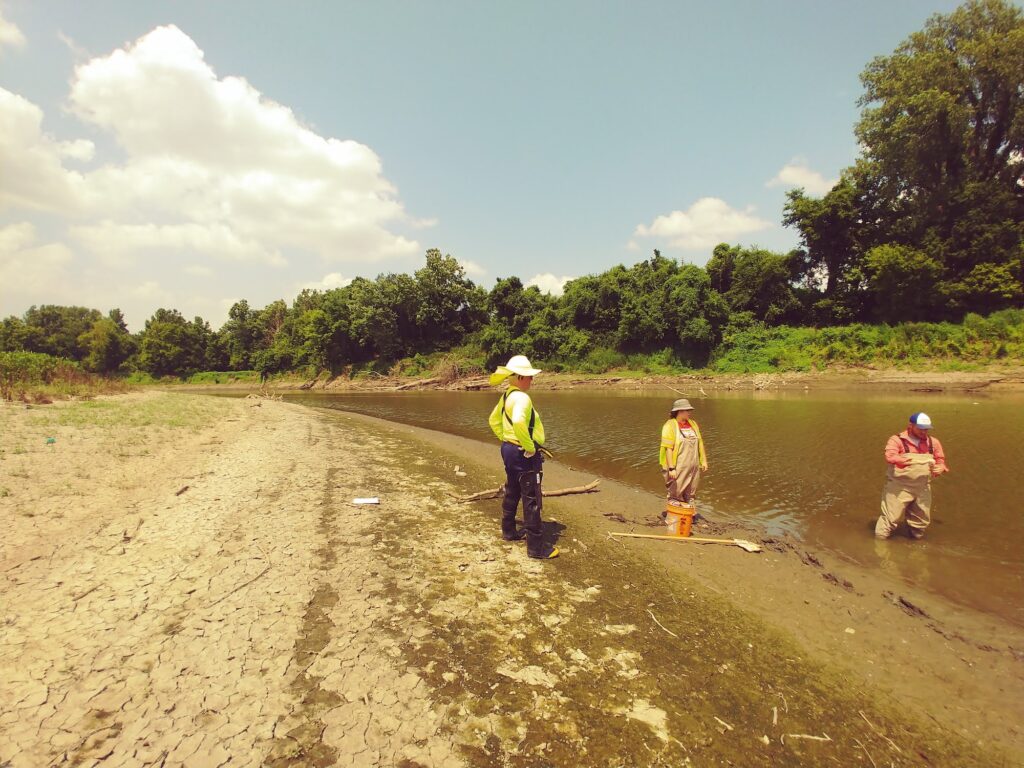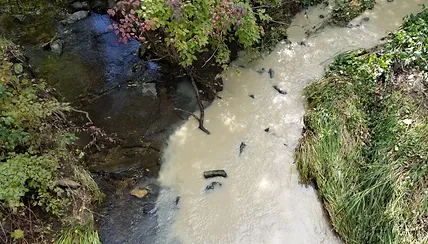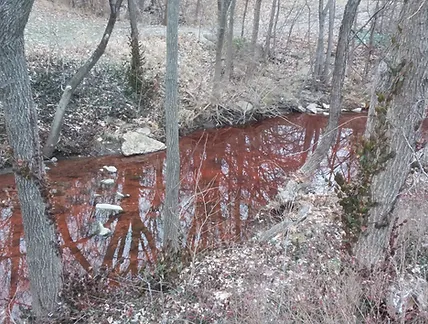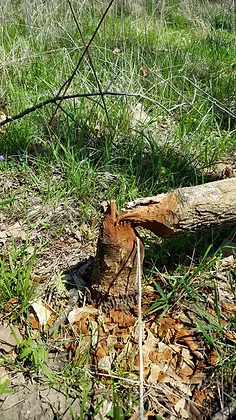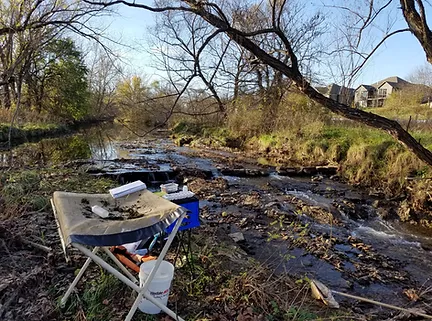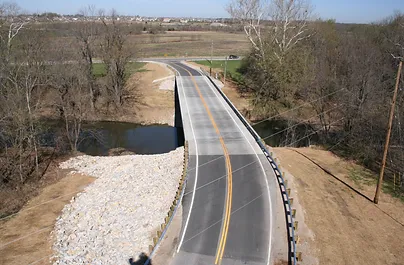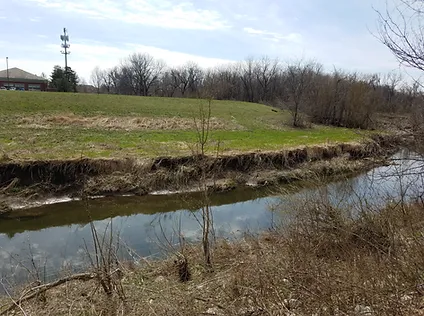The Blue River
Report Card
About the Report Card
The Blue River Report Card is a unique iterative process that seeks to grade the Blue River watershed holistically. To create the Report Card, the watershed was divided into three sections: the Upper, Middle, and Lower. Each section was scored separately. This approach takes data from a wide array of categories and indicators to best understand the river’s health as well as the community’s connection to the Blue River. The categories measured are:
Community Connections
Development
Governance
Habitat
Recreation
Water Quality
Download the Blue River Report Card
For additional information, please download the Glossary of Terms
The Blue River Report Card will increase awareness among Kansas City communities and progress watershed protection policies and actions that will ensure the Blue River remains an asset to Kansas Citians into the future.
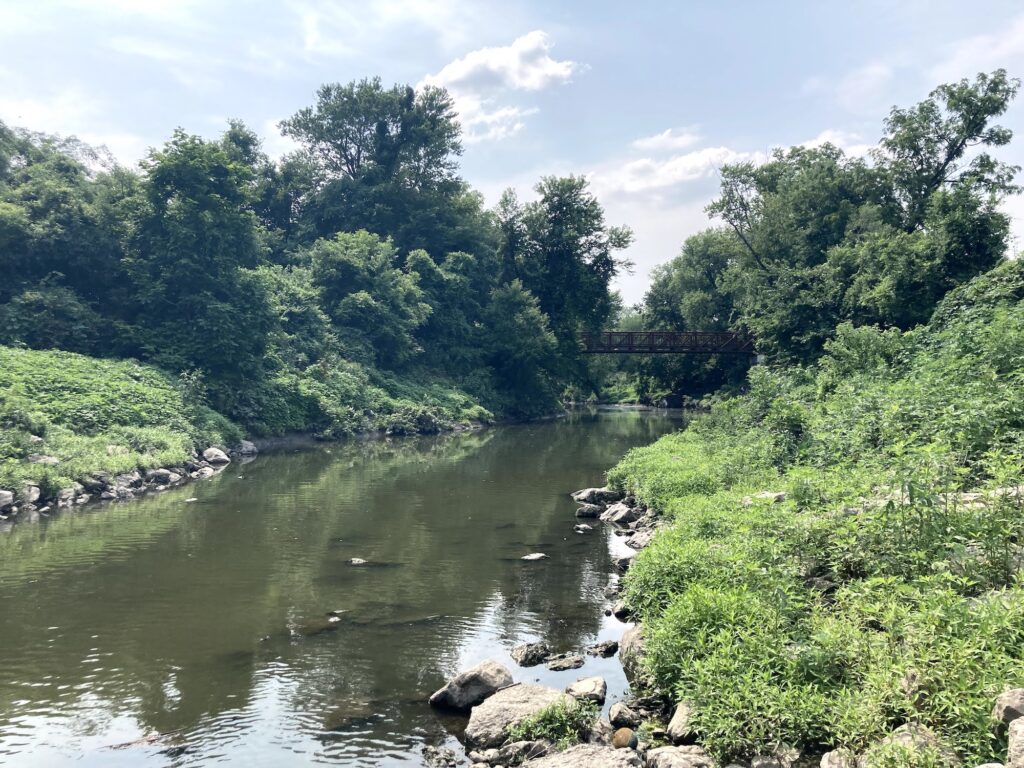
How healthy is the Blue River?
In 2021, the Blue River Watershed received a “C“ letter grade with an overall score of 46%.
The photographs below were taken to assess the Blue River and provide documentation of the habitat, water quality and development indicators for the Blue River Report Card. These are just a few examples of how the Blue River has been impacted and the varying levels of restoration needed. Photos are by Ian Fannin-Hughes.
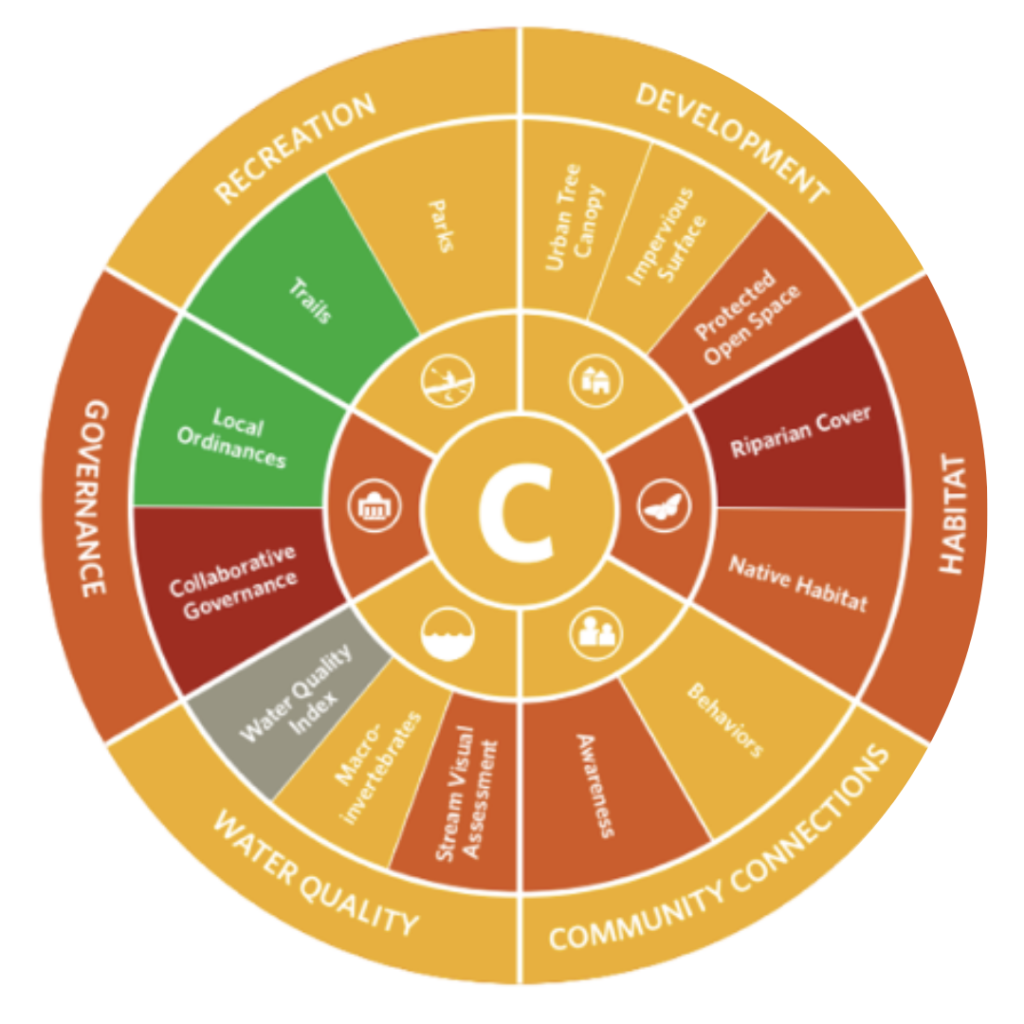
Habitat: how much natural habitat exists along the Blue River to maintain a healthy ecosystem?
- Indicator 1: Riparian cover – how extensive is the natural forest vegetation along the Blue River?
- Indicator 2: Native Habitat – how much natural vegetation exists and is managed in the Blue River?
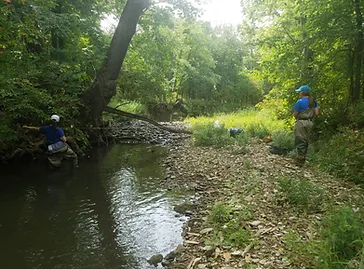
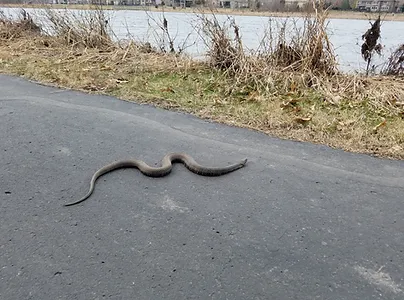
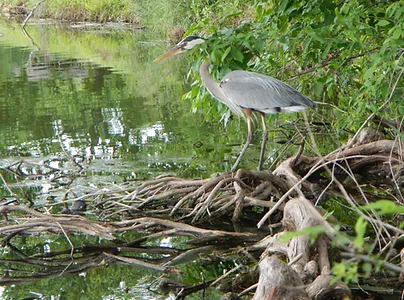
Water Quality: How clean is the water in the Blue River to provide for aquatic life and community recreation?
- Indicator 1: Water Quality Index – How does pollution affect the water quality of the Blue River?
- Indicator 2: Macroinvertebrates – How many different invertebrate organisms can survive in the Blue River?
- Indicator 3: Stream Visual Assessment – How impacted are the habitats, riparian areas, banks and stream beds of the Blue River?
Development: How do development practices impact the Blue River?
- Indicator 1: Impervious Surface – how much impervious surface (roads, rooftops, etc.) surrounds the Blue River?
- Indicator 2: Protected Open Space – How much land is protected from development and left open for people to enjoy?
- Indicator 3: Urban Tree Canopy – How expansive is the tree cover in our communities?
Heartland Conservation Alliance seeks to objectively improve grades within the science-based Blue River Report Card with every update. The tentative schedule for the 2024 update is:
- Fall 2023 / Winter 2024 – committee assignment, strategic planning, and methodological review
- Spring / Summer 2024 – data collection
- Summer / Fall 2024 – data analysis and writing
- Fall / Winter 2024 – HCA publishes report card update
Contact HCA Conservation Program Manager, Jess Hartel, if you have questions regarding the Blue River Report Card: jess@heartlandconservationalliance.org
